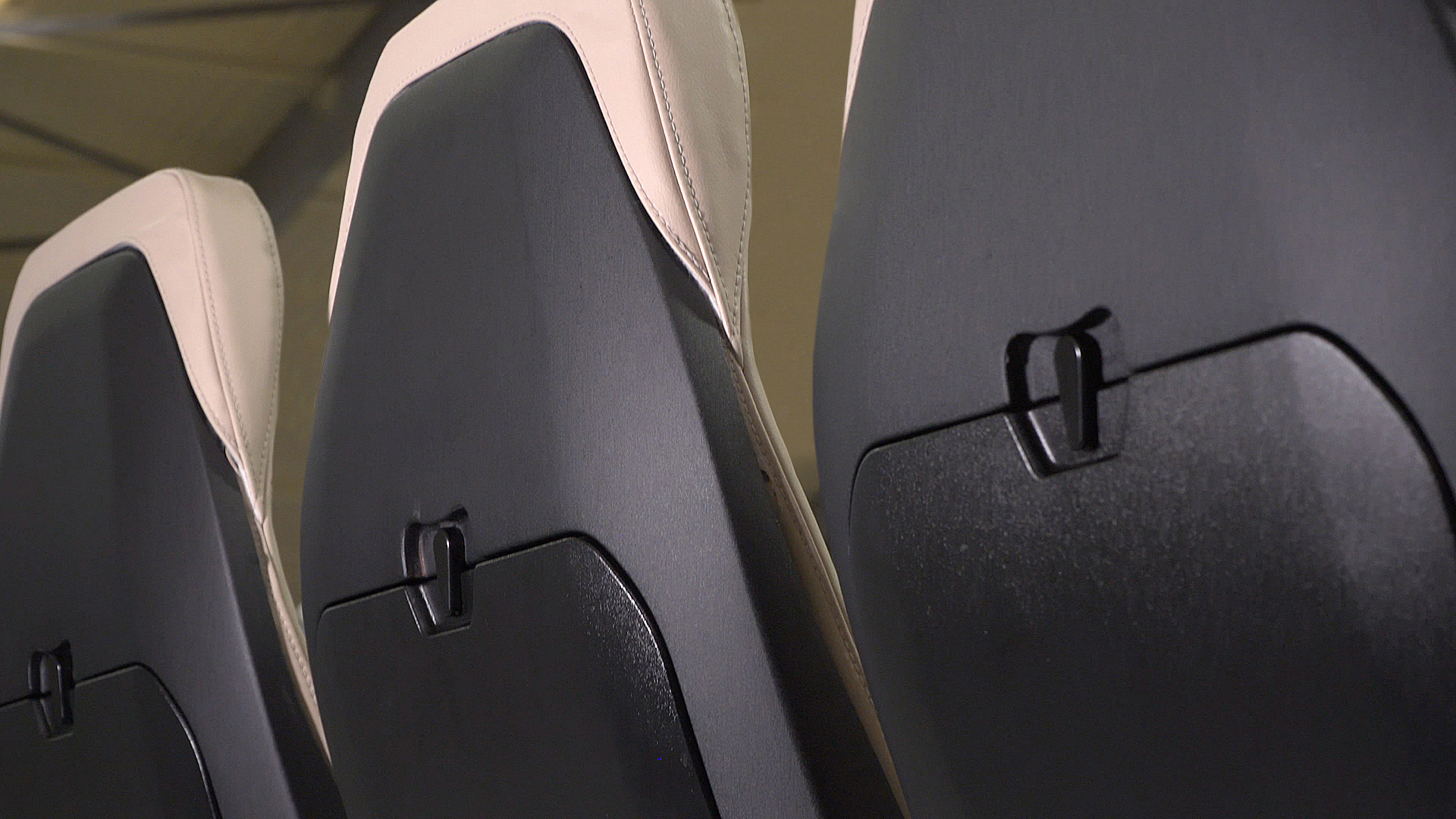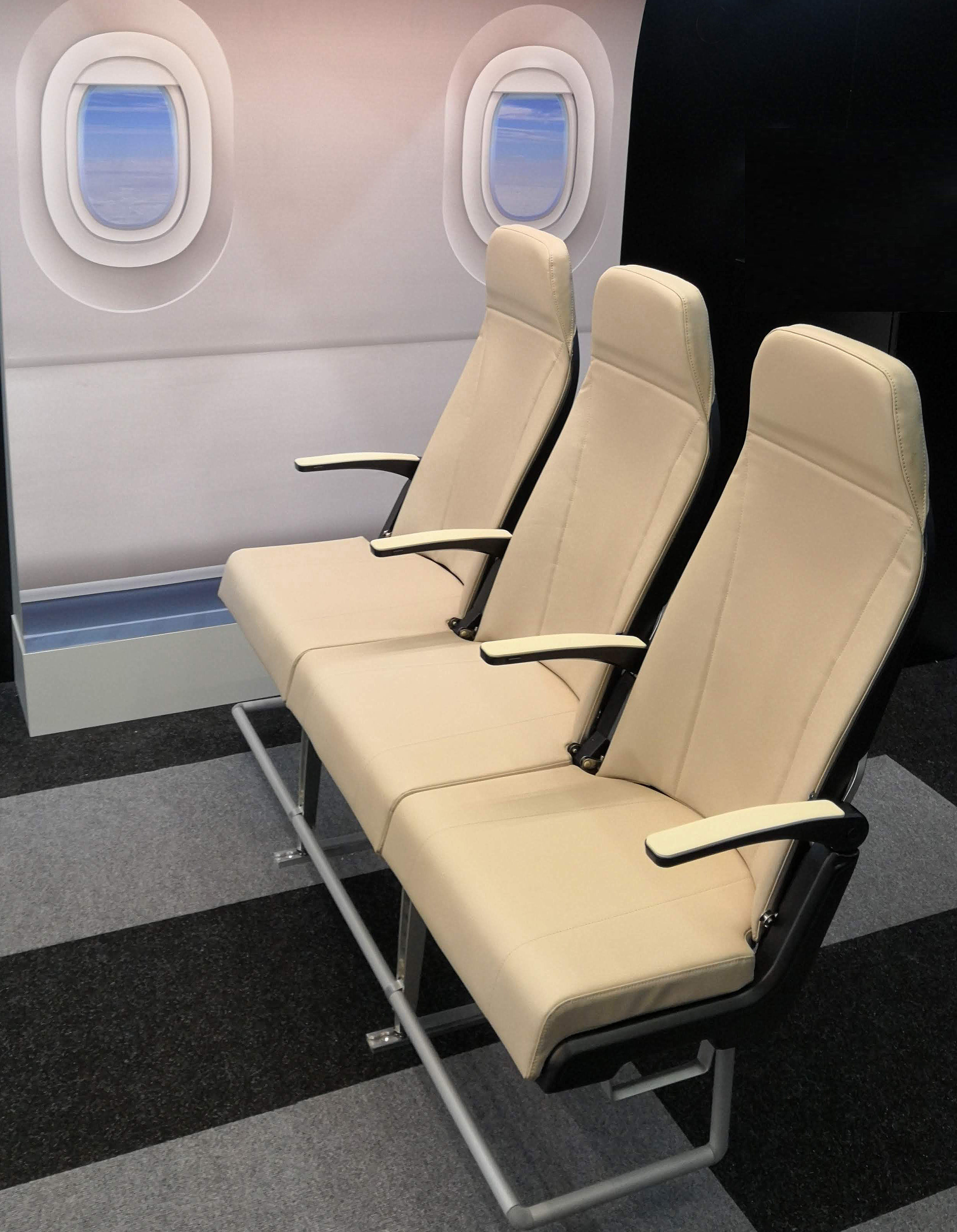Aircraft Seat Back Case Study
Objective: Reduce seat weight and increase the efficiency of cabin space. Meet regulatory requirements and be cost competitive.
BLS Solution
- • Light-weight at 1.5 kilos (Seats that weigh 7.0 kilos)
- • Smaller seat structure compared with aluminum or phenolic
- • Slim seat design enables more efficient use of space
- • Meets the aerospace fire, smoke, toxic and heat release requirements
- • Meets the 16G and HIC compliance requirements
- • Offers stiffness-to-weight ratio superior to aluminum or steel
- • Built-in head impact zone
- • Cost competitive
- • Low cost tooling
- • Incorporates recycled materials
- • Reduces BOM and assembly cost
- • Molded construction enables complex geometries to create ergonomic shapes

Above: BLS seatbacks with tray tables are light-weight with a contoured, slim profile. This allows an airline to add an additional row of seats or to provide more leg room.
Above: Watch a short video on how BLS aircraft seat backs are manufactured.

Row of seats
